Westell - B90-327W15-06 (Westell Firmware)
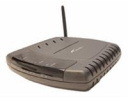
Port Triggering Guide
Note: An added benefit of Port Triggering is you do not need to worry about
ip addresses.
When using port triggering with applications that don't make outbound
connections you can use my free
Port Triggering
Initiator to make the connections to trigger the ports for you.
Step 1.
Open your favorite web browser and input your routers ip address in the address bar.
Please note that you must have the http:// in order to connect to your
router/modem properly.
Need help finding you router IP address?
Click here

Step 2.
Some router/modems require a username and/or password, if yours requires it,
enter the routers username and password here.

If you don't know it you can check our list of default router and modem password list
here.
If you have changed it and don't remember it you may have to reset your device to factory default
using the reset button on most routers.
Step 3.
Once logged into your router click on "Configuration" then 'Services'
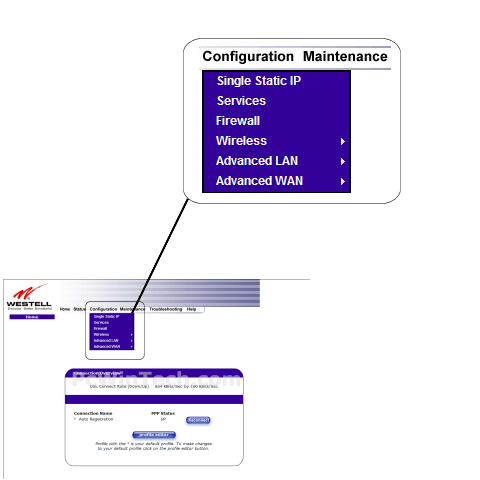
Click To View Full Picture
Step 4.
Now click on 'Define Custom Service'
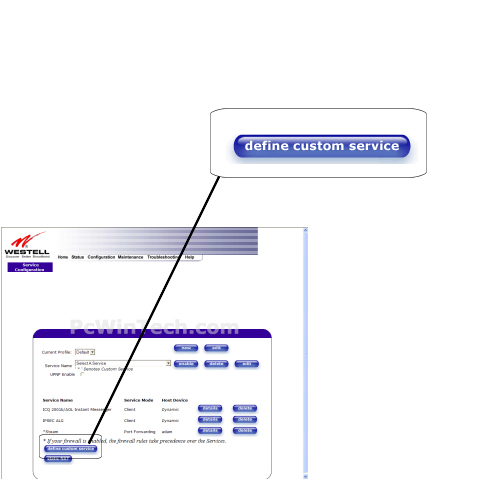
Click To View Full Picture
Step 5.
Choose 'Trigger Ports' and click 'Next'
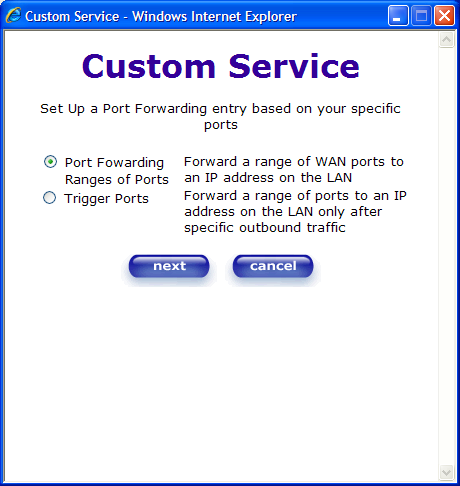
Click To View Full Picture
Step 6.
For 'Service Name' give this entry a name, this must be unique from any other
entries.
In the 'Local 'Trigger' Port Range' enter the ports to be used as the
trigger.
Example: 2100 to 2200 or 3000 to 3000
In the 'Global Port Range' enter the ports to be forwarded.
Example: 2100 to 2200 or 3000 to 3000
Click 'Next'
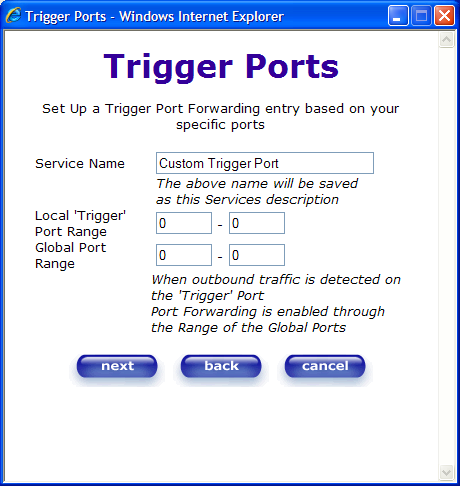
Click To View Full Picture
Step 7.
This screen will show you the ports you have added.
To add more ports click 'Add'
Repeat this steps 6 & 7 for all ports.
Once done adding ports close the pop up window.
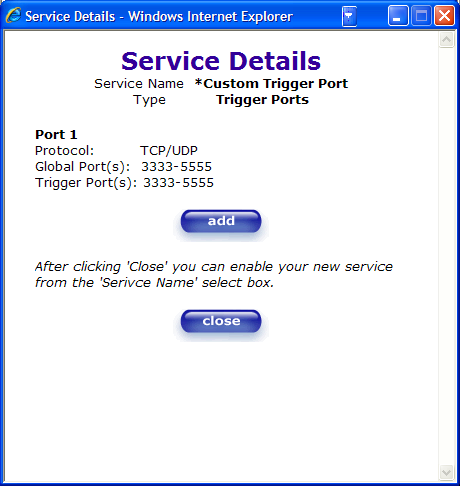
Click To View Full Picture
Step 8.
Once you have added all the ports you need choose the entry you made from the
drop down list 'Service Name'
Then click 'Enable'
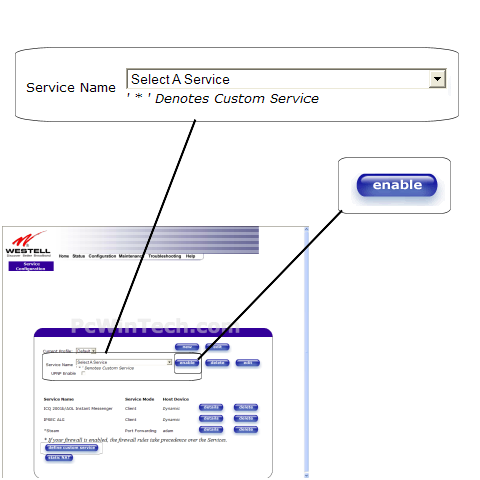
Click To View Full Picture
All done!

